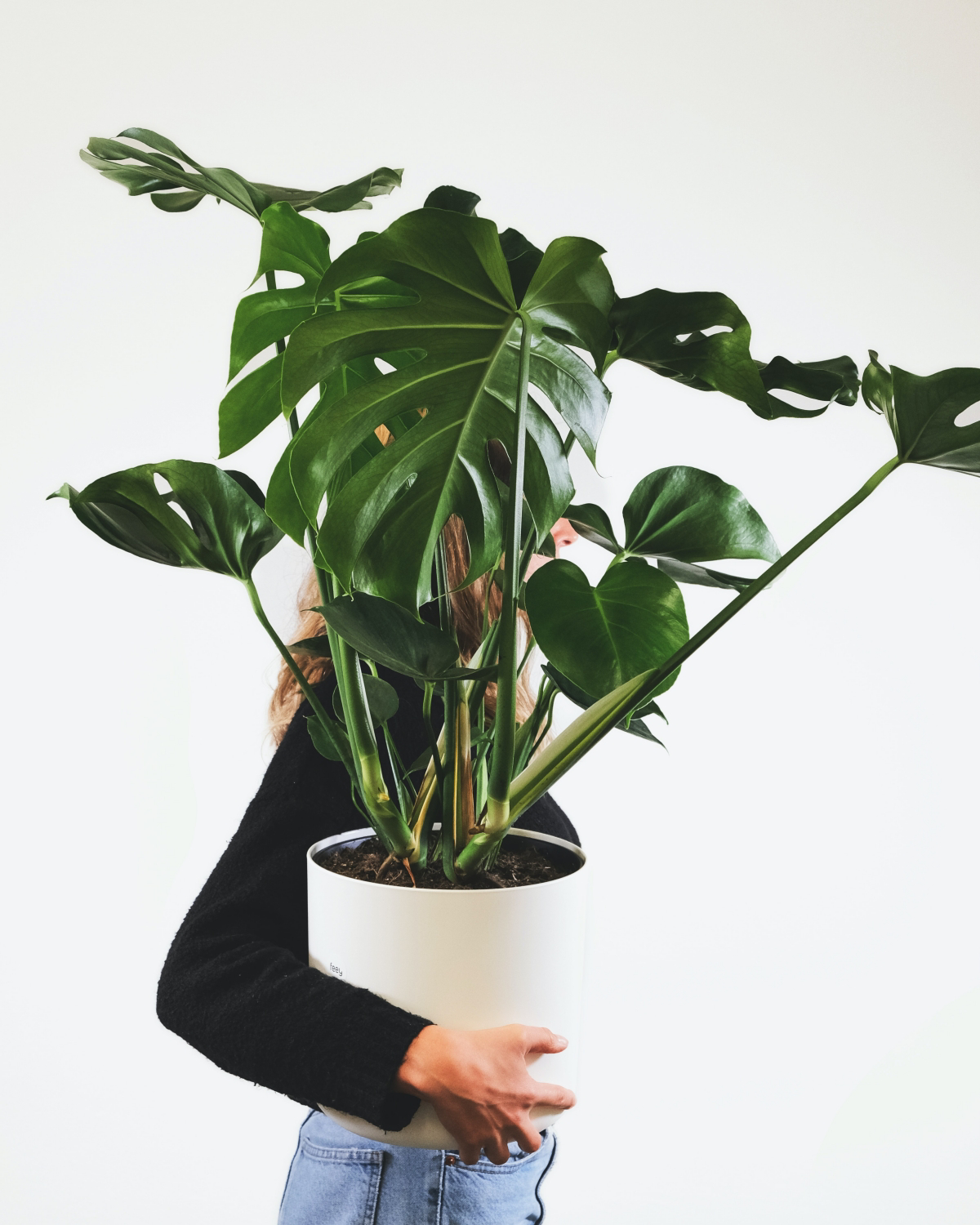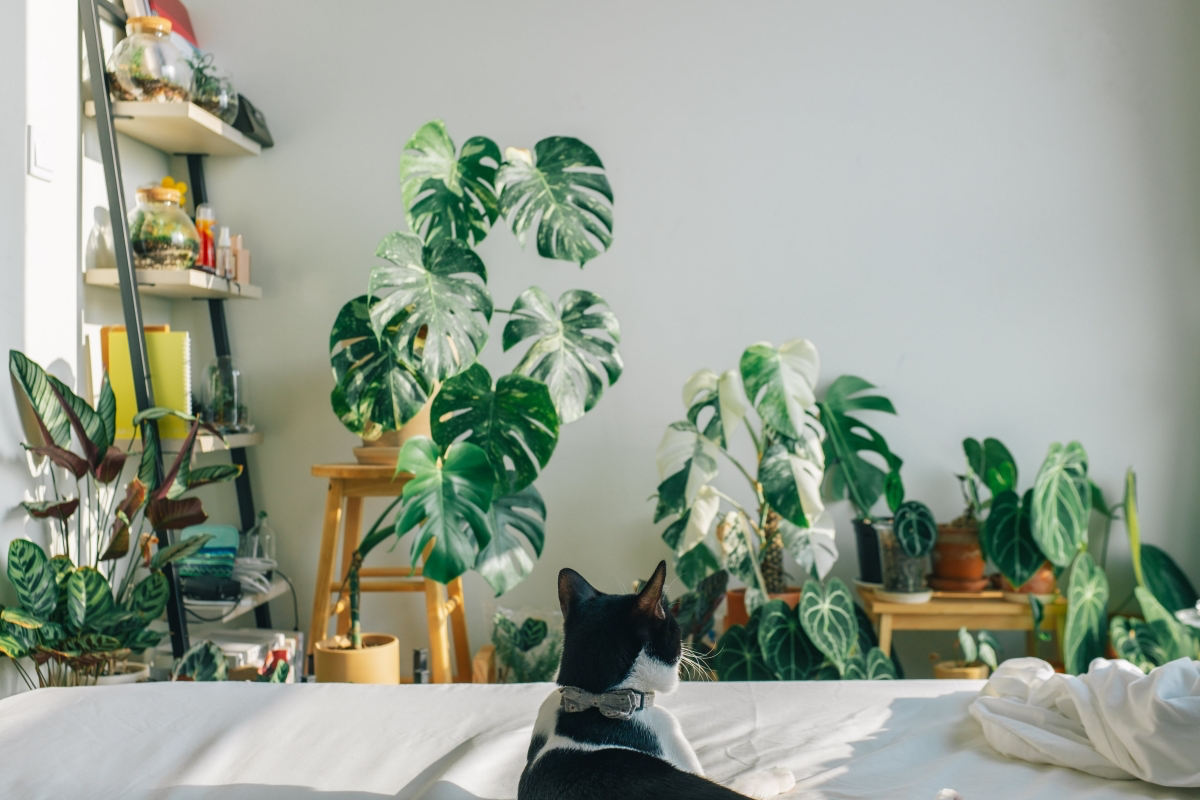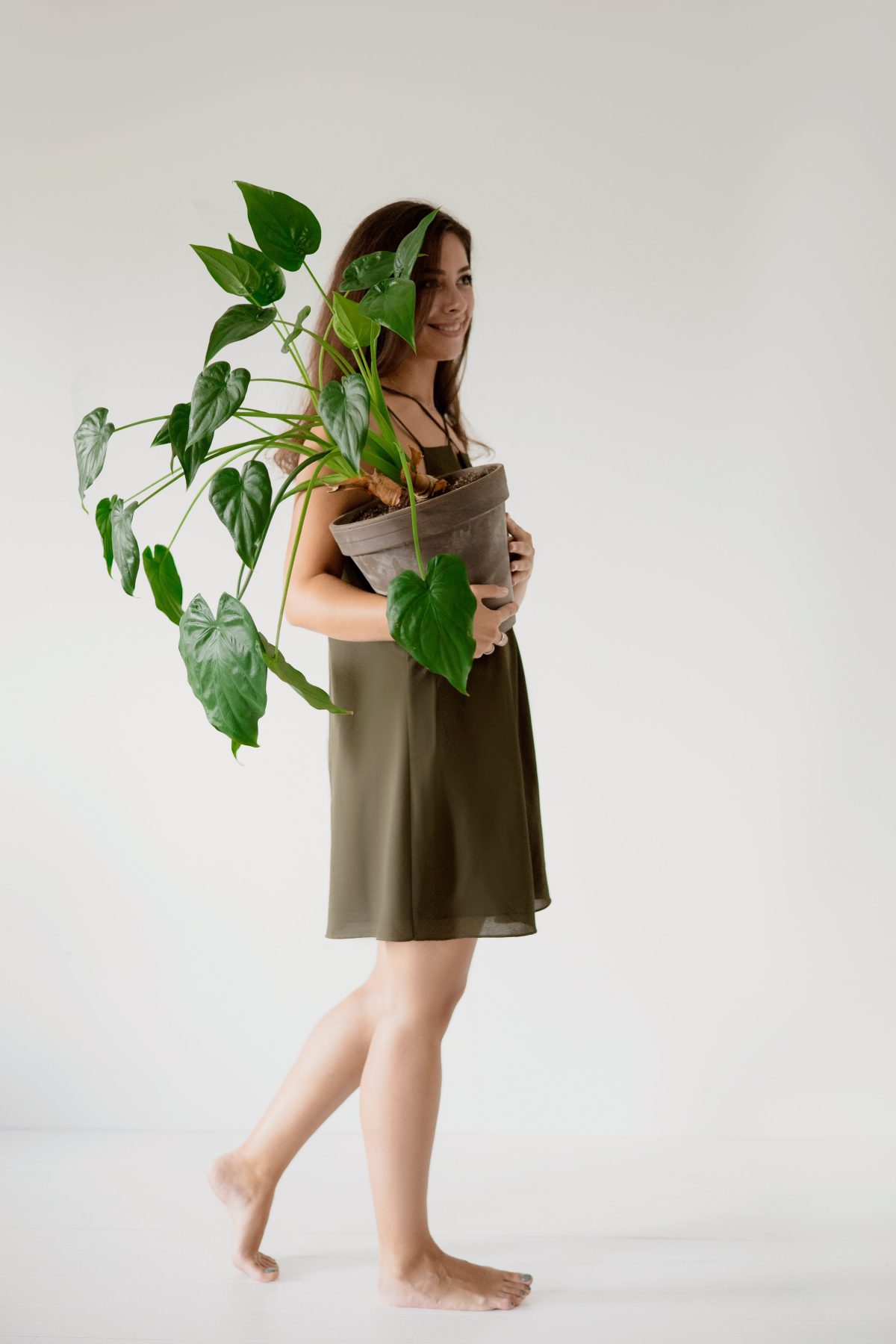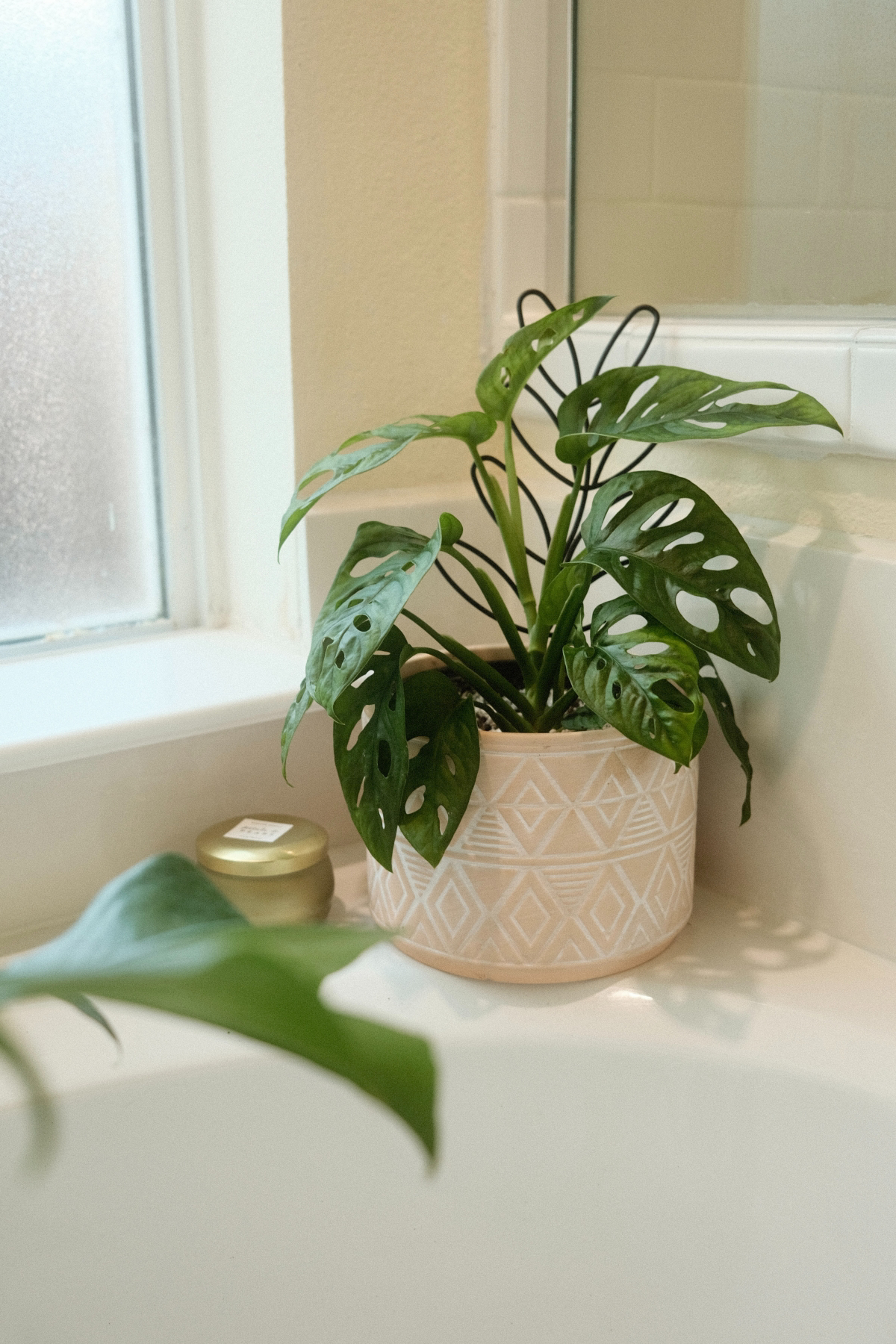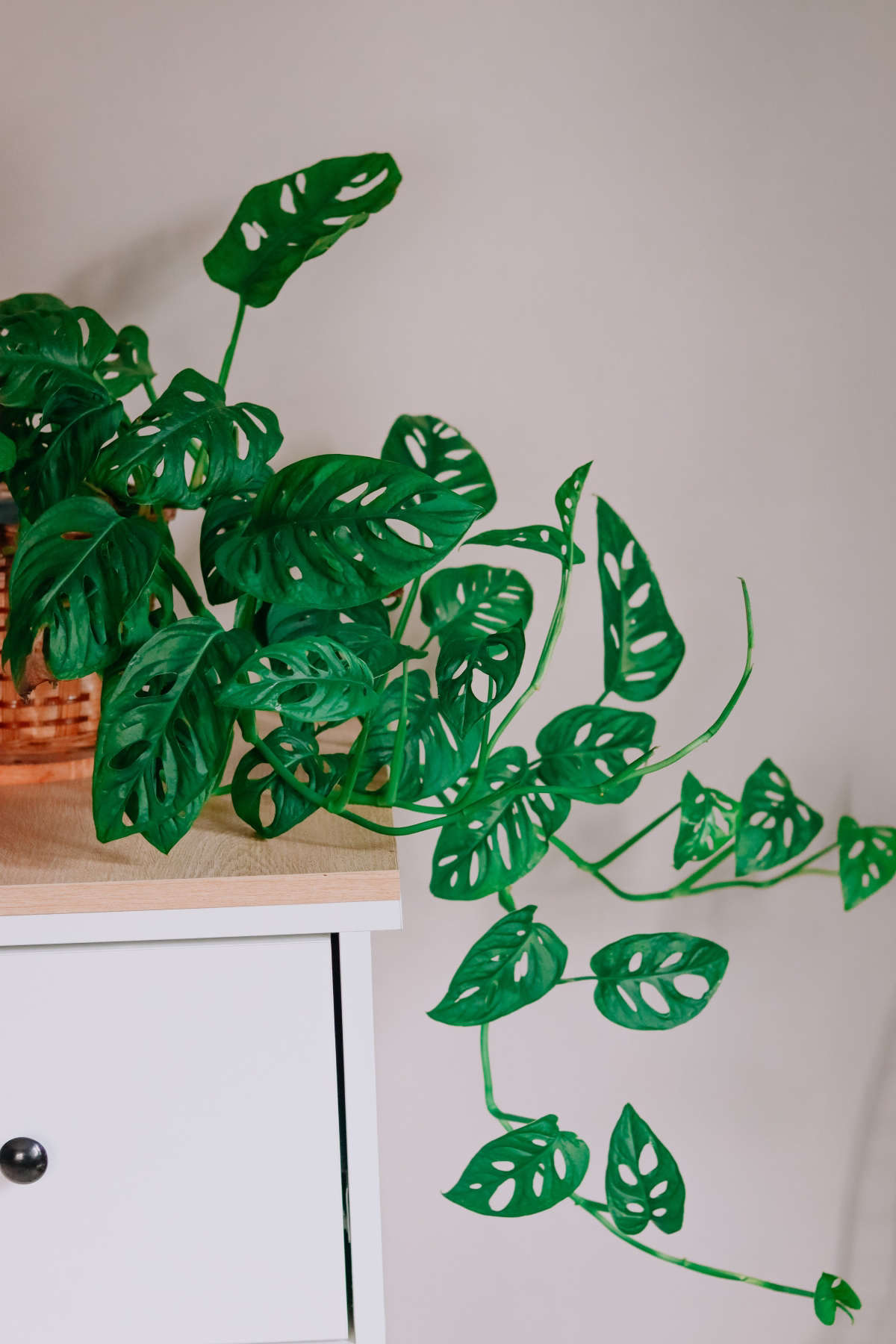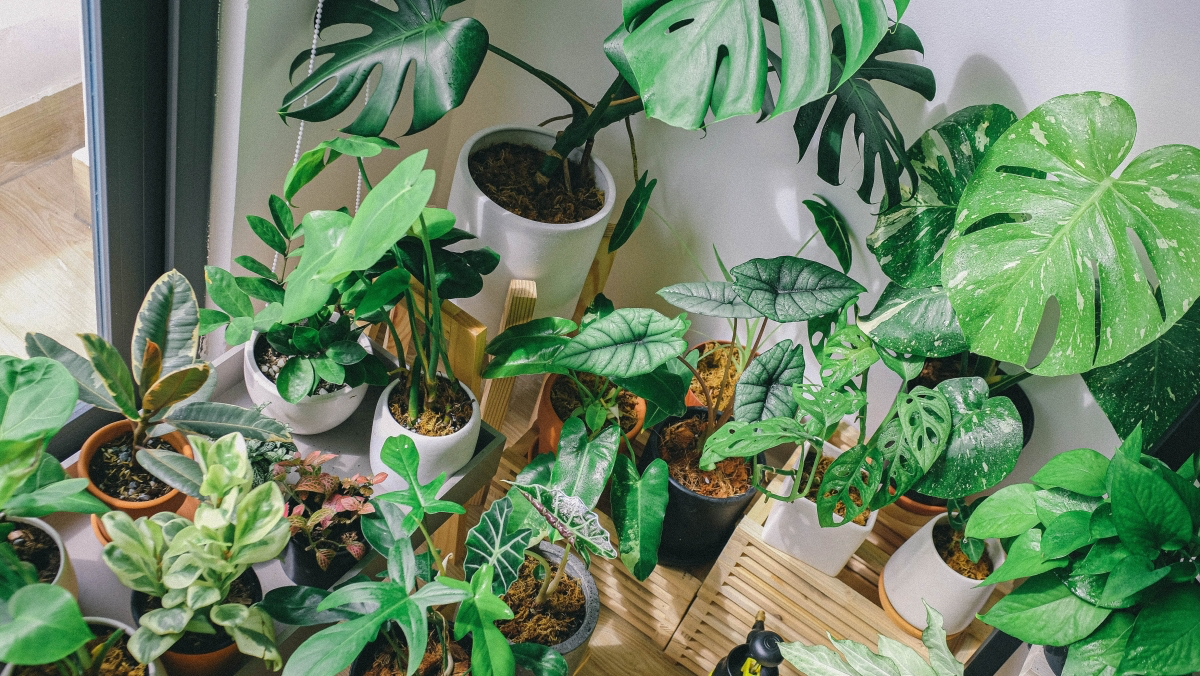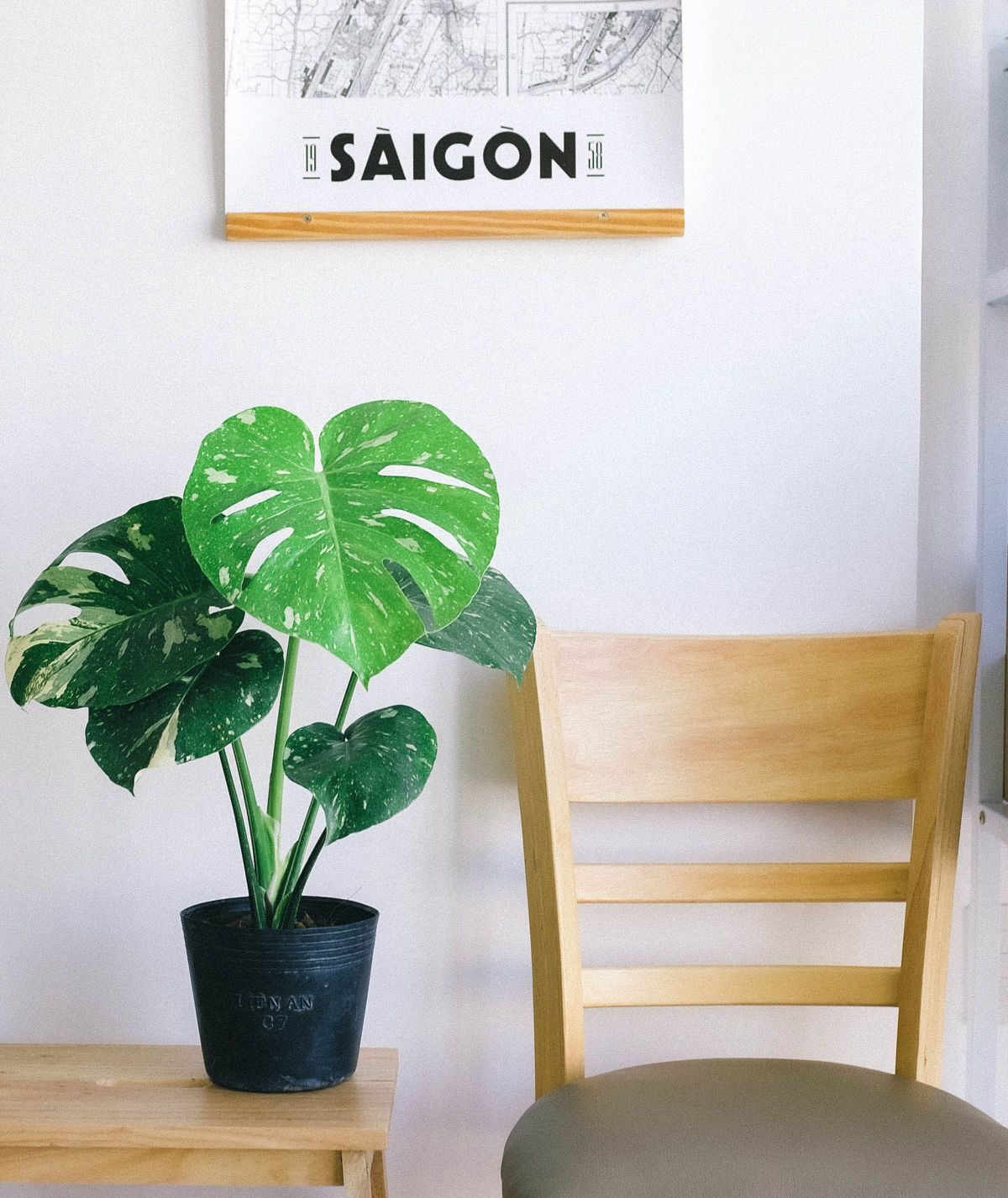Elevate Your Home with a Swiss Cheese Plant: A Care Guide
The world of indoor gardening is a thriving paradise of lush greenery and botanical beauty, and the Swiss Cheese Plant stands out as a true gem in this realm. With its unique foliage and relatively low-maintenance nature, it’s no wonder that this plant has become a staple in many households. But before we dive into the intricacies of Swiss Cheese Plant care, let’s embark on a journey to understand what makes this plant so remarkable.
Let’s learn more about taking care of this tropical beauty in this guide
In this article
- What is a Swiss Cheese Plant?
- Who Should Get a Swiss Cheese Plant?
- What are the Benefits of Owning a Swiss Cheese Plant?
- Who Should Avoid This Plant?
- Is a Swiss Cheese Plant a Hard Plant to Take Care Of?
- How to Take Care of a Swiss Cheese Plant
- Conclusion: Nurturing Green Beauty
- More Articles You Might Like
What is a Swiss Cheese Plant?
The Swiss Cheese Plant, scientifically known as Monstera deliciosa, belongs to the fascinating Araceae family, a group of plants renowned for their captivating foliage. Its roots trace back to the tropical rainforests of Central America, where it thrives in the dappled sunlight that filters through the dense canopy above. What truly sets this plant apart is its distinctive leaves, which undergo a remarkable transformation as it matures. Starting as modest-sized, heart-shaped leaves, they gradually develop into large, glossy specimens adorned with an intricate network of holes and splits, reminiscent of the unique patterns found in Swiss cheese. These striking features create an extraordinary visual impact, making this plant a living work of art that effortlessly enhances any indoor setting.
The Swiss Cheese Plant is scientifically known as Monstera deliciosa
Who Should Get a Swiss Cheese Plant?
Now, as you contemplate introducing the Swiss Cheese Plant into your indoor garden, you’ll discover that its appeal transcends boundaries. If you possess an appreciation for the allure of unique foliage and a longing to infuse your living space with a touch of the tropics, then the Monstera is an ideal choice. Whether you’re a seasoned plant enthusiast with a home full of green companions or a budding green thumb taking your first steps into the world of indoor gardening, this botanical masterpiece welcomes you with open arms. Its exotic charm knows no bounds and is ready to grace your life with elegance and vibrancy.
If you possess an appreciation for the allure of unique foliage, then this plant is an ideal choice
What are the Benefits of Owning a Swiss Cheese Plant?
Owning a Swiss Cheese Plant extends beyond mere aesthetics; it offers a multitude of advantages that can transform your indoor environment. Here are some compelling reasons why you should consider inviting this magnificent plant into your life:
- Air Purification: Swiss Cheese Plants excel at purifying the air in your home. They diligently work to remove harmful toxins and allergens, creating a healthier and more comfortable indoor atmosphere for you and your loved ones.
- Aesthetic Appeal: The Monstera’s striking foliage adds an element of elegance and tropical allure to any room it graces. Its bold leaves, with their captivating patterns, serve as conversation-starters and focal points of beauty.
- Low Maintenance: Despite its exotic appearance, the Monstera is remarkably easy to care for, making it suitable for both experienced plant parents and those new to the world of indoor gardening. Its robust nature and adaptability allow it to thrive with minimal effort.
- Therapeutic Value: Nurturing a Swiss Cheese Plant can be a deeply calming and therapeutic experience. It offers a unique sense of connection with nature, allowing you to observe its growth and flourish under your care. This process fosters a sense of mindfulness and tranquility, promoting your overall well-being.
By choosing to bring a Swiss Cheese Plant into your life, you’re not just acquiring a houseplant; you’re inviting an enchanting piece of nature that enhances your home, improves your health, and nurtures your spirit. It’s a delightful journey of botanical companionship that promises to reward you with its timeless beauty and unwavering presence.
This plant excels at purifying the air in your home
Who Should Avoid This Plant?
While the Swiss Cheese Plant is a delightful addition to most households, it’s important to consider a few factors if you have specific circumstances:
- Pet Owners: If you share your home with curious and playful pets, particularly cats and dogs, it’s crucial to exercise caution when incorporating the Monstera into your indoor garden. Some philodendron varieties, including the Swiss Cheese Plant, can be toxic if ingested by pets. The consumption of its leaves may lead to digestive issues and discomfort for your furry companions. To ensure the safety of both your pets and your plant, it’s advisable to keep the Monstera out of their reach or choose pet-friendly houseplants that pose no harm to your animal friends.
Now that we’ve explored who should and shouldn’t consider the Swiss Cheese Plant, let’s delve into the specifics of caring for this tropical beauty. Rest assured, it’s not as challenging as it may seem, and the rewards are truly extraordinary.
If you have curious pets, particularly cats and dogs, it’s crucial to exercise caution with this plant
Is a Swiss Cheese Plant a Hard Plant to Take Care Of?
Caring for a Monstera plant may seem like an intimidating task, given its exotic appearance, but fear not. With the right guidance, anyone can successfully nurture this stunning plant. Let’s break down the essential aspects of Swiss Cheese Plant care to ensure your foliage thrives.
With the right guidance, anyone can successfully nurture this stunning plant
How to Take Care of a Swiss Cheese Plant
Watering
Watering your Swiss Cheese Plant is a delicate balance, much like tending to the needs of a cherished friend:
- Consistent Moisture: Monsteras prefer consistently moist soil. Water them regularly, allowing the top inch of soil to dry between watering sessions. However, avoid letting the soil become soggy, as this can lead to root rot.
- Drainage is Vital: Ensure your plant’s pot has adequate drainage holes to prevent water from accumulating at the bottom. Proper drainage is essential for the health of your Swiss Cheese Plant.
- Humidity Matters: These plants appreciate increased humidity levels. You can maintain humidity by misting the plant occasionally or placing a tray of water nearby. Grouping your plants can also create a microclimate with enhanced humidity.
Ensure your plant’s pot has adequate drainage holes to prevent water from accumulating
Light
Light plays a pivotal role in the growth of your Swiss Cheese Plant. Consider the following:
- Bright, Indirect Light: Swiss Cheese Plants thrive in bright, indirect light that replicates their native habitat. Place your plant near a window with sheer curtains or in a well-lit room without direct sunlight.
- Protection from Harsh Sun: Shield your Monstera from harsh, direct sunlight, which can scorch its leaves. Think of it as providing the ideal shade for a sunbathing friend.
Place your plant near a window with sheer curtains or in a well-lit room
Temperature
Maintaining the right temperature range is essential for your Swiss Cheese Plant’s well-being:
- Warm Comfort: Keep your Monstera in a warm environment, with temperatures ranging between 65°F to 80°F (18°C to 27°C). These plants adore the warmth reminiscent of their tropical origins.
- Draft-Free Zone: Protect your plant from drafts and abrupt temperature fluctuations, which can cause stress and hinder growth. Imagine it as ensuring your friend stays cozy and comfortable.
Keep your Swiss Cheese Plant in a warm environment
Fertilization
Feeding your Swiss Cheese Plant is a crucial aspect of its care regimen:
- Balanced Nutrition: During the growing season (typically spring and summer), feed your Swiss Cheese Plant with a balanced, water-soluble fertilizer every 4-6 weeks. This nourishes your plant and promotes healthy growth.
- Dilution Matters: Always follow the instructions on the fertilizer package for proper dilution. Over-fertilization can do more harm than good.
Feed your Swiss Cheese Plant with a balanced, water-soluble fertilizer every 4-6 weeks
Placement
Choosing the right location within your home is vital:
- Avoid Air Conditioning and Heating Vents: Keep your Swiss Cheese Plant away from strong air conditioning or heating vents. These can cause fluctuations in temperature and humidity, which your plant may not appreciate.
- Consider Higher Humidity: If you have a bathroom with naturally higher humidity levels, it can be an ideal spot for your Monstera. Think of it as a spa day for your plant.
Keep your Swiss Cheese Plant away from strong air conditioning or heating vents
Soil
The right soil mix is essential for your Swiss Cheese Plant’s health:
- Well-Draining Mix: Opt for a potting mix that drains well, preventing waterlogged soil. This promotes healthy root growth and overall plant vitality.
- Nutrient-Rich Mix: A mix enriched with organic matter provides the necessary nutrients for your Swiss Cheese Plant. Think of it as offering a well-balanced diet to your plant.
Opt for a potting mix that drains well, preventing waterlogged soil
Propagation
Expanding your Swiss Cheese Plant family is possible through propagation:
- Springtime Adventures: Spring is the best time for propagating your Monstera. Take stem cuttings with at least one leaf and a node for successful propagation. It’s like introducing your friend to a new social circle, expanding their horizons.
Spring is the best time for propagating your Swiss Cheese Plant
Pests
While Swiss Cheese Plants are relatively pest-resistant, occasional invaders may appear:
- Vigilance is Key: Keep an eye out for potential pests like spider mites or mealybugs. If you detect any unwelcome guests, address them promptly with neem oil or insecticidal soap. Think of it as maintaining a harmonious environment for your friend.
Keep an eye out for potential pests like spider mites or mealybugs
By following these care tips, you’ll nurture a flourishing Swiss Cheese Plant that graces your space with its elegant foliage and enhances your indoor environment. Just as a cherished friendship deepens over time, your bond with your Swiss Cheese Plant will grow stronger, and the beauty it brings to your life will become even more apparent. With dedication and a touch of green-thumb finesse, you’ll have a stunning botanical companion to accompany you on your indoor gardening journey.
With dedication and a touch of green-thumb finesse, you’ll have a stunning botanical companion
Conclusion: Nurturing Green Beauty
In summary, the Swiss Cheese Plant is more than just a houseplant; it’s a living work of art that brings the elegance of the tropics into your home. With the guidance provided in this comprehensive care guide, you’ll embark on a journey of nurturing, growth, and beauty. Your Monstera will become more than a botanical companion; it will be a living testament to the joy and wonder that nature can bring to your daily life. So, my fellow green-thumbed enthusiasts, let us embark on this botanical adventure, tending to our Swiss Cheese Plants with love and dedication. As our Swiss Cheese Plants flourish and thrive, so too will the beauty and serenity they bring into our homes, enhancing our lives one velvety leaf at a time.
Now you know how to take proper care of this tropical beauty!

